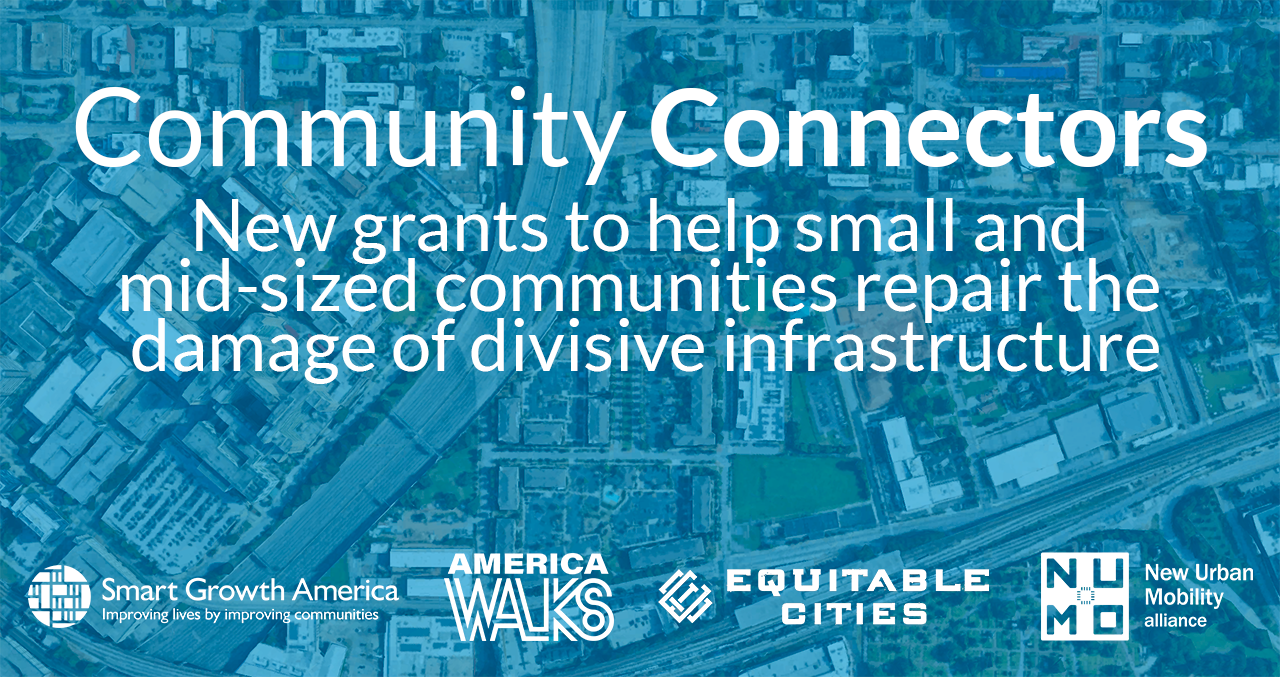Environmental protection rules: How to use NEPA to protect communities
The two most important things to know about NEPA and other environmental laws are that not all projects get the same level of environmental review, and the power (of NEPA especially) to either stop or fundamentally alter bad projects is incredibly limited. NEPA is a process that gives you space to make your case and hopefully change some minds.
What is NEPA and what does it apply to?
The National Environmental Policy Act (NEPA), was enacted into law on January 1, 1970, to establish a national policy for the environment as well as establish the Council on Environmental Quality (CEQ) to issue regulations. NEPA requires federal agencies to assess the direct, indirect, and cumulative environmental effects of proposed federal actions or federally funded projects, and consider potential alternatives, prior to making final decisions. NEPA does not require agencies to select the environmentally preferable alternative, only to be informed of and try to mitigate the consequences of their decisions.
How does NEPA apply to federally funded transportation projects?
The process begins when a federal agency, or an organization receiving federal funding, develops a proposal and creates an initial design for a project. Then the agency studies the environmental impacts of the project and any alternatives and determines potential actions to mitigate that damage.
Not all projects require the same level of review. There are three possible findings:
- Projects found to have no significant impact qualify for a Categorical Exclusion (CE). For example, repaving a roadway on the same footprint, striping a bike lane, or adding a bus shelter. This is determined by the agency itself, using a checklist of criteria.
- If there are any doubts on a project’s potential environmental impact, an Environmental Assessment (EA) is conducted to assess the impact a project will have on the environment. The EA process results in either a Finding of No Significant Impact (FONSI) or in a determination of need for an Environmental Impact Statement (EIS).
- If the effects will significantly impact the environment, an Environmental Impact Statement (EIS) is prepared. An EIS is a major assessment of environmental impacts of a proposed project. The agency, along with interested and impacted stakeholders, will assess the holistic environmental, cultural, and social impacts the project may impose. The EIS concludes with A Record of Decision (ROD) issued by the federal agency explaining the reasons for the final project decision and summarizing any mitigation measures that will be incorporated into the project.
For more detailed information on the NEPA process see FHWA’s NEPA webpage.
Why is the NEPA process important?
Going through the NEPA process requires the agency and elected officials to fully consider all the environmental impacts of the project, how to mitigate them or whether to seek another option that does not carry the detrimental impacts. It requires involvement from the public including comment periods at several points throughout the process, an invaluable opportunity for affected communities to raise their concerns and see that they are addressed.
Other statutes related to NEPA
Sometimes when people refer to the “NEPA process,” they are using it as shorthand for all regulatory reviews required of federally funded projects, like the Endangered Species Act, wetlands and water quality as well as civil rights protections and historic preservation. All of these reviews can be synchronized or run concurrently with NEPA. The Environmental Protection agency has provided guidance on how to do that in their 2015 “Red Book.” However, many issues—from complexity and differing statutory procedures to funding and staffing of certain agencies—can make this challenging.
What NEPA is not and things to keep in mind
A project does not need to be canceled just because it is found to have negative impacts on the environment. The project sponsor need not even choose the alternative with the lowest impact. NEPA merely requires an agency to consider the impacts of their alternatives, choose their preferred alternative and then take steps to avoid, minimize, or compensate for any damage—even when they cannot do so fully.
The NEPA process is more like a standardized test for state DOTs, except instead of being graded on their answers, they’re graded on how well they’ve filled in the bubbles. Federal law requires them to fill in each bubble to a certain standard, and if they haven’t—such as by not sufficiently consulting minority communities or not completing analyses required by other federal laws—then they’re required to go back and make sure that bubble is completely colored in. Sometimes, this process reveals that an agency can’t fill in the bubble in a way that complies with federal law and the state decides to try to stop trying to, such as when a freeway expansion in Los Angeles was recently canceled. But many states would keep trying and eventually find a way to cover enough of that bubble to get their project built.
Projects you might view as good for the environment usually have to go through a NEPA review too. A project to take down a freeway will require the same level of review as a project to build a new one. But whereas agencies have experience, comfort and guaranteed funding to build a new highway, they have none of these for taking a highway down. Therefore, NEPA can be used to more easily disrupt a highway tear down.
NEPA comes too late in many cases. To analyze the impact of a project on the environment, you have to have spent time scoping and designing a project. That usually means substantial time, labor and money has gone into a project by the time the NEPA review begins. It is only human to fight to protect that work, so agencies are extremely reluctant to walk away from it at this point. However, agencies are not required to accept public input before NEPA, making it challenging to engage earlier. The extent to which advocates can watch the planning and, especially, the programming processes to raise concerns as projects are proposed the better chance they will have in getting the agency to change course.
Other things to keep in mind:
- NEPA is not applied consistently across modes or regions. The NEPA designation is determined by the agency (FHWA, FTA or FRA) and usually by the local team (FHWA division staff, FTA regional staff). FTA is known for requiring a higher level of review than FHWA and some regional/division offices are known for requiring an EIS when another division/region would only call for an EA. This is not an exact science.
- Even if a project will likely have a positive impact on air quality, it can still require a full EIS. NEPA regulations are not written with projects that benefit the environment in mind and do not give good guidance on how to handle that. Also a project can be good for air quality and bad for wetlands.
- DOTs should account for NEPA in their schedules, but sometimes they do not do so sufficiently, making the cost of the project look smaller and then blaming NEPA for the delay and cost escalation. When the project is controversial and that controversy is not handled early, it tends to cause significant delays in highway projects.
- Frequently, projects claimed to be “stuck in NEPA” are stuck due to lack of funding to move that project along, many times because it is not an agency priority. But it can be advantageous for the agency to blame NEPA and not their choice of prioritization when talking to the press or supportive politicians and stakeholders.
How to use NEPAtism to improve projects
Make sure to participate in any public engagement processes. Your state agency might have a mailing list that would inform you of these opportunities. If you have a relationship with your local elected officials or your state legislators, they can help ensure that you are notified of these opportunities (and hopefully participate themselves). This does not mean you should participate only when there is a project you dislike. You should also be involved heavily for those you support as that support may be necessary to counter loud opponents.
Where your concerns are not appropriately responded to, you may need to turn to the legal system. But even with lawsuits, it is important to remember that NEPA is not designed to stop projects. It is a statute used to consider environmental harms caused by a project and determine the best ways to mitigate them. This process, including lawsuits , can be useful to raise concerns about the projects and whether the potential damage is worth it. Sometimes this discussion leads an agency or elected officials to determine the expense of the project with all the necessary mitigation isn’t worth the cost or that the damage to the environment, the community or public health itself can never be truly mitigated. Sometimes the delays that can occur under NEPA provide time for leadership or circumstances to change and the project may no longer have support or seem appropriate.
Most importantly, you must remember: NEPA itself does not provide a mechanism to require a transportation agency to abandon a problematic project. It is a process that gives you space to make your case and maybe change some minds.
Community Connectors: tools for advocates
 You may be fighting against a freeway expansion. You may be trying to advance a Reconnecting Communities project to remove an old highway. You might be just trying to make wide, dangerous arterial roads a little safer for people to cross. This Community Connectors portal explains common terms, decodes the processes, clarifies the important actors, and inspires with helpful real-world stories.
You may be fighting against a freeway expansion. You may be trying to advance a Reconnecting Communities project to remove an old highway. You might be just trying to make wide, dangerous arterial roads a little safer for people to cross. This Community Connectors portal explains common terms, decodes the processes, clarifies the important actors, and inspires with helpful real-world stories.







